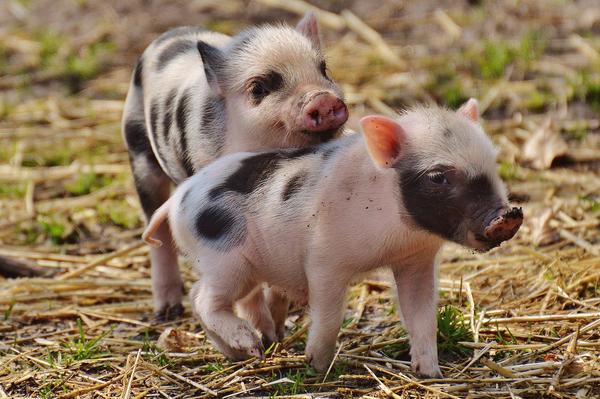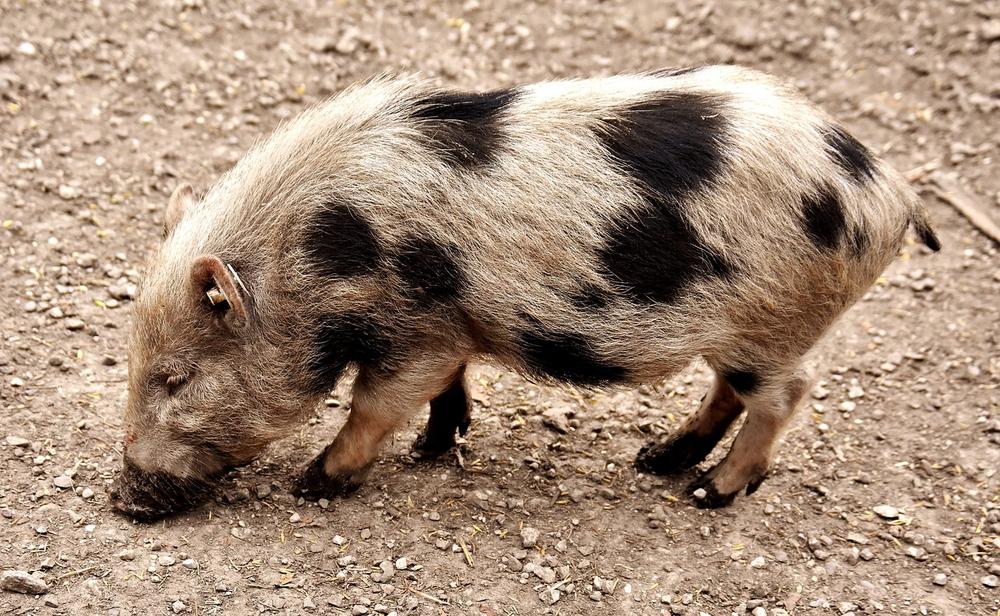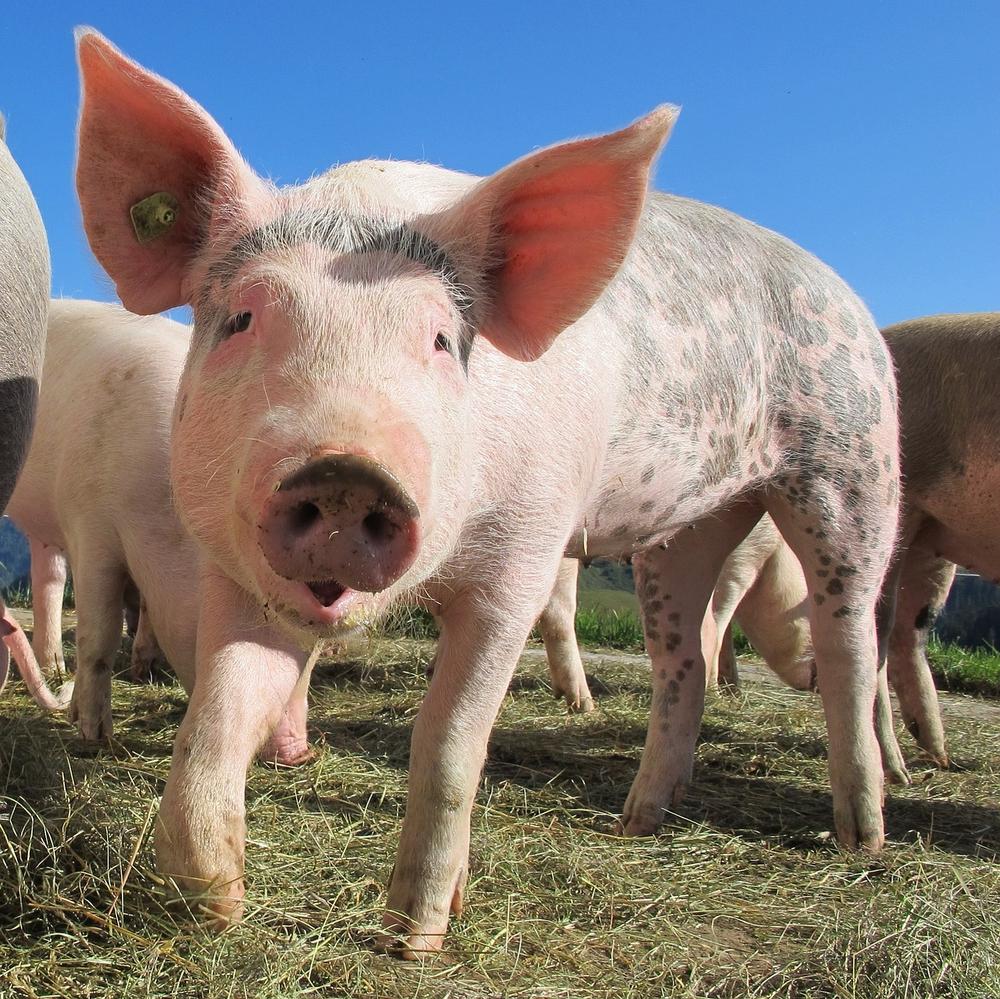Why Do Pigs Oink? (You Won't Believe the Actual Reasons)

Picture this:
You're walking through a farm, surrounded by squealing piglets and the unmistakable aroma of...
Well, you know.
Suddenly, you hear it.
That one sound that makes you tilt your head in confusion.
Why on earth do pigs oink?
What's the meaning behind those snorts and grunts?
Well, buckle up and get ready to dive headfirst into the fascinating world of porcine communication.🐷
Let's uncover the truth together, shall we?
So, grab a cup of coffee, get cozy, and let's embark on this oinking adventure.
Ready?
Let's begin.
Why Do Pigs Make Noise?
Pigs make noise as a form of communication, expressing their emotions and seeking attention. Interestingly, wallowing in mud serves as a self-care routine for them, providing cooling, skin protection, and insect repellent benefits. So, let them oink and indulge in their natural behaviors.
Pigs oink for various reasons, my friend.
You see, pigs are very sociable animals.
They live in tight-knit groups and use vocalizations to talk to each other. Oinking is their way of showing emotions like excitement, distress, or when they simply want attention.
It's like having their own language, you know?
But there's more to it.
Have you ever witnessed a pig diving into a muddy puddle?
Well, to us, it may seem messy, but for pigs, it's pure bliss and self-care.
By wallowing in mud, they effectively regulate their body temperature on hot days.
And guess what?
Those pigs truly know how to beat the heat!

Not only that, but these mud baths also work wonders for their skin. The mud acts as a natural sunscreen, shielding them from harmful UV rays.
Moreover, it keeps their skin moisturized and pesky insects at bay.
So, next time you catch sight of a pig rolling around in the mud, remember, they're not just fooling around—they're treating themselves to a spa-like experience!
Now, with that being said, you understand why those delightful oinks occur.
Pigs are merely expressing themselves and indulging in their innate behaviors.
Let them oink and relish their oink-filled lives! 😊
Main points I'll expand upon further down this article:
- Pigs use vocalizations like high-pitched oinks for stress and comfort.
- Grinding teeth can indicate either agitation or pleasure in pigs.
- Grunting is the primary means of communication between pigs.
- Monkey-like noises show excitement and a desire for attention.
- Pigs also rely on body language to convey dominance, fear, or anxiety.
- Slow and relaxed movement conveys care or submission in pigs.
- Pig oinks differ based on size, using different vowels for different tones.
- Onomatopoeic sounds in pig oinks symbolize aggression, distress, and trust.
- Wagging tails show happiness and contentment in animal communication.
- Cultural influences shape onomatopoeic sounds in different languages.
But you know what's even more fascinating?
It's not just through their oinks that pigs communicate.
Their body language speaks volumes, giving us a deeper understanding of their emotions and social dynamics.
So, let's dive into the intriguing world of pig communication!
Decoding the Multifaceted Language of Pigs
Forget just listening to their sounds, pay attention to the way pigs move.
Watch how they stand and sway, it reveals what's going on inside.
Pigs have a whole repertoire of oinks that mean different things.
High-pitched means stress, low-pitched shows they're at ease.
Grinding teeth can mean they're upset or content.
Grunting is their pig-to-pig chat.
Monkey-like noises scream "Look at me!"
But there's more you need to know...
Their slow and relaxed stroll says they care or submit. Don't miss these clues to get closer to piggies.
Did you even realize?
The size of a pig changes its sounds too.
Tiny ones use early vowels for higher pitches, larger ones rely on later letters for more bass.
This one-of-a-kind aspect makes pig talk so fascinating.
So here's my tip for you...
Read their body language, hear their chatter, and pick up on these subtle signs to truly grasp what your piggy friend wants to say.
And to delve even deeper into the fascinating world of pigs, I invite you to explore my insightful guide on the sensory reliance of these remarkable creatures.
In this comprehensive blog post, you will discover the incredible senses that pigs rely on and how they navigate the world around them.
So, if you're eager to satisfy your curiosity and gain a deeper understanding of pig behavior, I highly encourage you to check out my article, Sensory Reliance of Pigs
Common Misconceptions about Pig Oinking
There are many misconceptions about pig oinking that we need to clarify.

Contrary to what people believe, pigs oink for various reasons and it doesn't always mean they are unhappy or suffering.
Let's dive into the details:
- Pigs oink to express joy during their daily activities or when engaging in playful behavior.
- Different oinking expressions have symbolic meanings. For example, shrill screeching represents threat or aggression, while screaming accompanied by jerky movements indicates distress or pain.
- Breathing hot air towards someone's legs is a sign of trust and a desire to provide comfort.
- Animals, just like humans, communicate through body language. A wagging tail in pigs signifies happiness and contentment.
- Onomatopoeic sounds vary across languages and cultural influences shape them as well. Pigs oink in English, Italian, and Spanish, but dogs and cats have different sounds in each language.
These facts prove that oinking can have complex meanings and should not be automatically associated with negative emotions in pigs.
You ought to understand these nuances to appreciate the uniqueness and diversity of animal communication.
And that's all for today folks.
If you wish to read more of my useful articles, I recommend you check out some of these: How Do Pigs Find Truffles, Do Pigs Dream, Pigs Looking Upward, and Can Pigs Recognize Themselves in a Mirror
Until next time,
-Chris Campbell